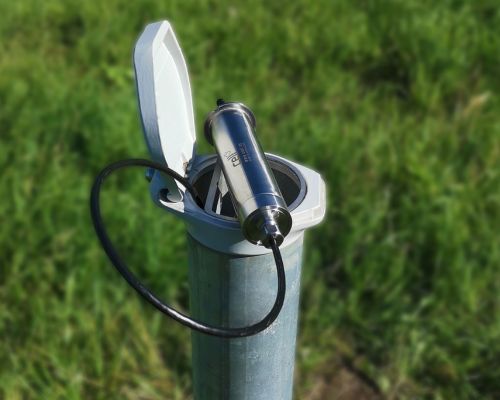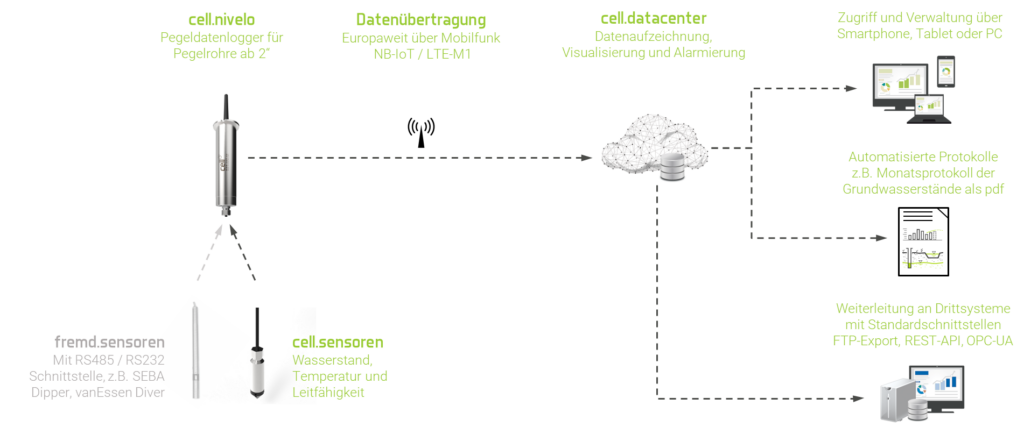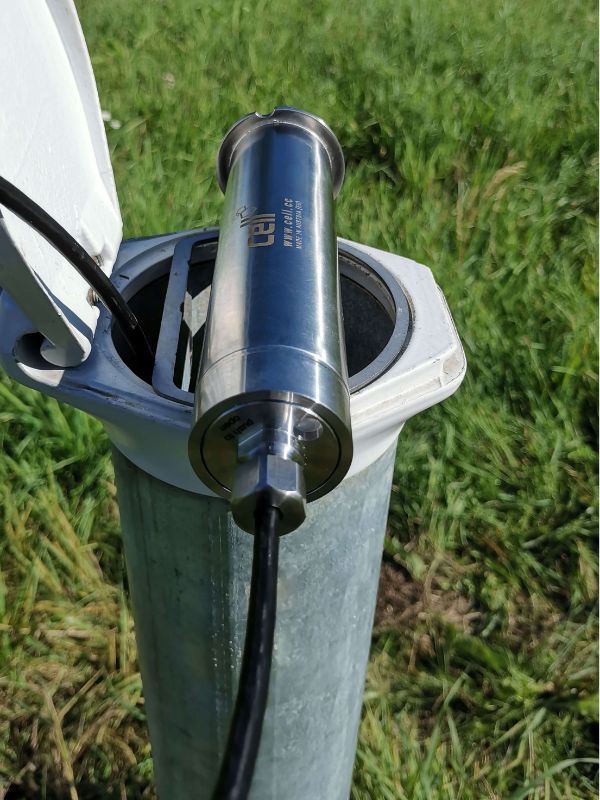cell GmbH
NIVELO: Groundwater professionally measure in 2'' level tubes




What's the solution about?
Groundwater monitoring is important for:
- Explorations for the basic assessment of groundwater resources
- Preservation of evidence for construction projects that may affect the groundwater
- Permanent monitoring to observe the long-term development of groundwater availability
The challenges
However, the establishment and operation of a groundwater monitoring system is faced with the dilemma of having to be as cost-efficient as possible on the one hand and highly reliable on the other. Factors that drive up personnel and cost expenditure in pure data logger systems without remote transmission are, for example:
- Frequent visits to measuring points: The need to visit measuring points regularly in order to read out data leads to high expenditure of time, personnel and resources.
- Unhandy data readout methods: Fiddling with adapter cables, dongles and laptops makes reading out data in the field a test of patience – especially in bad weather.
- Device failure and data gaps: Without remote transmission, the status of the devices in the field is unknown. Empty batteries and other faults lead to unwanted data gaps and thus to a poor image in front of customers and authorities.
- No active reporting: Without remote transmission, remote alerting in the event of limit value violations is not possible in order to prevent damage in the long term.
But even systems with remote transmission have their weak points:
- Complicated infrastructure: Setting up data transmission, configuring data servers in the IT infrastructure and managing SIM cards are complicated and time-consuming.
- Device management: The measuring point configuration tortures you with hundreds of setting options, which eats up time and increases the likelihood of misconfigurations.
- Data post-processing: The measuring stations in the field do not record at the same time, which makes intensive data post-processing necessary for a joint assessment of the data.
- Battery replacement in the field: Remote transmission requires more energy and necessitates more frequent and often complicated battery replacement in the field.
- Closed system: Without interfaces and data export functions, you are trapped in an isolated solution in terms of software. Data transfer thus becomes a task.
That works better
The nivelo groundwater data logger was developed to overcome precisely these challenges when monitoring groundwater. The system achieves this on the one hand by offering an attractive price for high material quality and on the other hand by optimising processes; These make working with the system in the office and in the field much easier and more efficient.
In practice, this means:
- Permanent data readout and remote configuration option via web platform
- App for even easier commissioning on site
- Storage, evaluation, visualisation as well as function and transmission monitoring via the web platform
- Existing probes/loggers (e.g. SEBA Dipper, VAN ESSEN Diver) can be retrofitted with the Nivelo telemetry unit
- Reliable alerting in the event of limit value violations, faults and system failures via SMS or e-mail
- Kombinierbar mit weiteren Messsystem und Datenloggern zur Erweiterung des Messstellennetzes
Technically, the solution is characterised by:
- High-quality stainless steel housing, easy to open without tools, battery can be replaced in the field
- Europe-wide mobile communication with integrated SIM and state-of-the-art mobile technology LTE-M1 / NB-IoT
- 8 years battery life at 60 min. Recording and 48 h transmission
- Permanently synchronised real-time clock, memory-to-memory synchronisation for data transmission
- Extensive interfaces to third-party systems such as control technology software packages, WISKI, HYDAS, HYDRAS, …
This is how it works:

These components are used
Cell GmbH stands for measurement technology & remote monitoring and combines technologies from different disciplines. These include solutions for drinking water, snowmaking, hydropower and tunnel construction.
With the coordinated components, tasks ranging from battery-powered condition monitoring to cross-station remote monitoring and control systems are solved.
-
Hauptstraße 25a
5600 St. Johann im Pongau
Austria - info@cell.cc
- +43 6412 21245
- www.cell.cc


